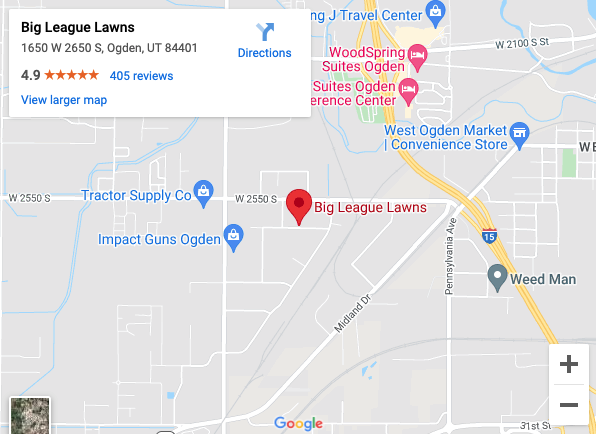When it comes to having a beautiful lawn, weeds are the bane of every homeowner. Weeds detract from the appearance of your lawn. Weeds compete with your grass — robbing it of nutrients, water, and space. To have the lawn of your dreams and one that is the envy of the neighborhood, you need to determine the types of lawn weeds you have so that you can find the best strategy to wipe them out.
13 Types of Common Lawn Weeds
Although some weeds have attractive foliage and beautiful blooms, and many are even edible, they don’t belong in your lawn. So, what are common lawn weeds in the beehive state? Clicking on the links will provide more information to help you identify weeks in your lawn.
- Dandelion — With more than 100 species worldwide and a seed head that can travel up to five miles once airborne, dandelions are the masters of survival.
- Henbit — A member of the mint family, henbit is relished by chickens — hence the name — and safe for human consumption as well.
- Ground Ivy — Another member of the mint family, the edible ground ivy is also known as creeping Charlie, hedgemaids, fill-over-ground and alehoof.
- Field Bindweed — With an extensive root system, the field bindweed can be difficult to control.
- Chickweed — Another edible plant that is loved by chickens, chickweed is a member of the carnation family.
- American Bellflower — Known by many names including bluebells and lady’s thimble, the bellflower is often used as a plant in flower gardens.
- Grape Hyacinth — Another common plant grown in flower gardens, the grape hyacinth can be difficult to eradicate because of the bulbs that quickly multiply underground.
- Black Medic — Black medic is a low growing, common lawn weed that is often mistaken as clover.
- Common Mallow — Another edible plant, the common mallow is also known as cheeseweed, cheeseplant and buttonweed.
- Annual Kochia — Forming a tumbleweed at the end of its life cycle, the Kochia adapts to many different environments.
- Foxtail — One foxtail plant can produce 5,000-12,000 seeds which can continue to be viable for up to six years.
- Thistle — With spiny, prickly leaves and large purple flowers, several thistle species grow all across the state including bull thistle and Canada thistle.
- Dock — Dock, also edible, is a very showy weed that has reddish-tinted, crinkly-edged leaves.
- Oxalis — This stubborn weed resembles a clover with the addition of tiny yellow flowers. It is difficult to get rid of this weed as even just a small fragment left behind can re-establish itself in almost any soil condition.
- Morning Glory — It takes multiple applications to effectively kill the root system of a morning glory weed. A single spray may kill the plant above ground, however, there are dormant buds along the whole root system and morning glory will come back as soon as that part of the root makes it to the surface.
Common Types of Lawn Weeds
The above list is the most common type of lawn weeds; however, there are dozens more that may be growing in your yard. Do you need help to identify them? For a complete listing of all noxious weeds in Utah, check out this online field guide provided by Utah State University Extension.
Big League Lawns Will Help You Control Common Lawn Weeds
Any of these weeds can quickly invade your lawn, robbing you of the beautiful outdoor space you’ve worked so hard to achieve. Many of these weeds are quite invasive and can easily spread to and from your neighbors, causing unsightly lawns throughout your neighborhood. Controlling them is not a one-time effort. It will require a consistent program including well-timed pre- and post-emergent product applications to keep your lawn looking its best. Need help? Big League Lawns will take out the guesswork. We’ll identify the types of lawn weeds you have growing in your yard and will design a >program to eliminate them.



